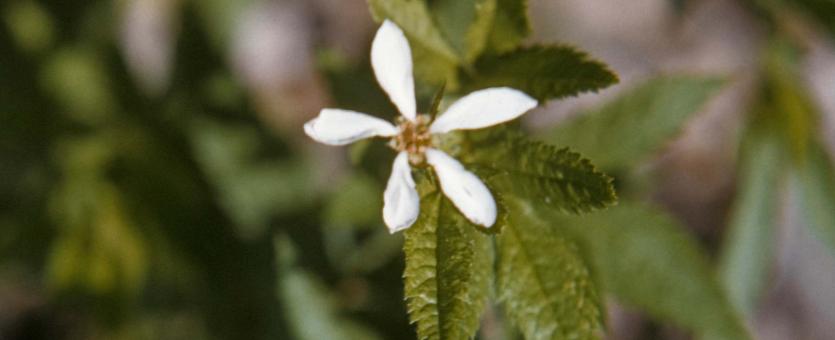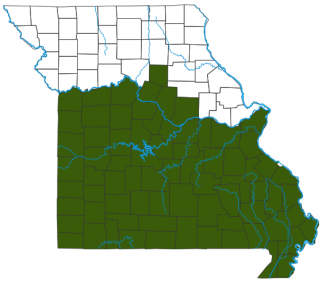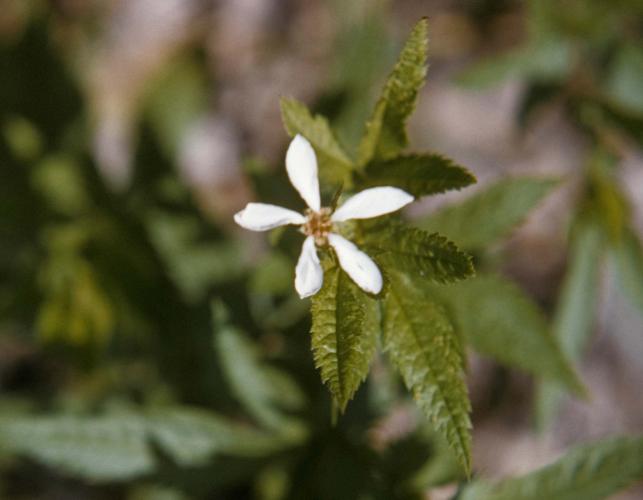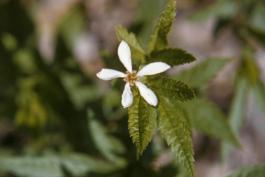Media

Scientific Name
Gillenia stipulata
Family
Rosaceae (roses)
Description
This leafy plant may cover entire hills in the Ozarks. Flowers are in small groups arising from upper leaf axils; the parts are in fives, with 5 erect sepals and 5 white, very narrow, spreading petals with pointed tips, about 20 stamens, and 5 pistils. Blooms May–July. Basal leaves are entirely different from stem leaves, pinnately divided, fernlike. The basal leaves appear much earlier than the upright stems. Stem leaves are 3-divided with lanceolate, double-toothed leaflets. All nodes have leaflike, trifoliate stipules.
Size
Height: to 3 feet.
Where To Find

Central and southern Missouri.
Habitat and Conservation
Occurs in dry uplands, open woods, usually on acid soils.
Human Connections
“Indian physic” and “ipecac” indicate Native American use for internal cleansing, a widespread ceremonial custom. "Ipecac" is a word referring to an emetic derived from dried roots of certain plants. Today, emetic drugs are used most often in cases of accidental poisoning.
Ecosystem Connections
The many diverse plants that colonize Ozark hillsides help to hold the soil in place during our infamous "gully washer" rainstorms. They are also the foundation for a forest ecosystem that includes fungi, insects and other invertebrates, and vertebrates such as birds and mammals.
Title
Media Gallery
Image

Right to Use
Image

Title
Similar Species
About Wildflowers, Grasses and Other Nonwoody Plants in Missouri
A very simple way of thinking about the green world is to divide the vascular plants into two groups: woody and nonwoody (or herbaceous). But this is an artificial division; many plant families include some species that are woody and some that are not. The diversity of nonwoody vascular plants is staggering! Think of all the ferns, grasses, sedges, lilies, peas, sunflowers, nightshades, milkweeds, mustards, mints, and mallows — weeds and wildflowers — and many more!





















